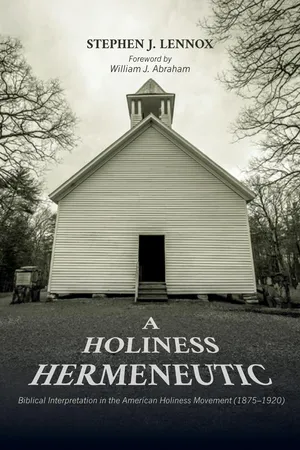![]()
1
Introduction
America in Crisis
The 1870s found American Christianity in crisis. No marauding Huns were disembarking in New York City to conquer Christianity by force (although some thought the analogy to be close to reality). The threat was not to life and limb but to the heart and soul of the church. This crisis was crucial, not only for the church, but represented one of the most critical periods in American history. The society that entered the final quarter of the nineteenth century was scarcely the same when it emerged less than fifty years later. It had matured, but not gracefully, having been dragged along from an old, traditional America to a new, modern one. Of all the institutions of society, the church was to feel the effects of this transition most keenly.
Clearly the Civil War represented a watershed episode in this transition. Winthrop S. Hudson described it as a war that impacted every family, the nation, and the churches. In addition to the staggering costs in human life and financial resources, there was the dilemma of making sense of such a war. How could it occur in America of all places? After all, this was the country chosen by God to demonstrate to the world the power of freedom. Now the same God who had called America to her sacred vocation was being called upon to bring victory to one half of that nation and defeat to the other. Such questions proved most vexing to the church.
Following the devastation of the war came the need to rebuild American society, a Reconstruction that was tragically slow both in society and in the church. The three major denominations that had split over the issue of slavery, the Methodists, Baptists, and Presbyterians, found reunion difficult, and in some cases, undesirable.
While the church was experiencing these tensions and demands, the need for ministry in the West became acute, prompted by the influx of population spurred by new discoveries and national policy. Home mission boards established to meet the needs experienced some success. Bringing organized religion to new settlements in the West was not unlike what the church had been doing since the settling of this country. However, a far greater challenge faced the church in the late nineteenth century, one for which they were essentially unprepared: that of ministry in America’s swollen cities.
The urbanization of America had begun prior to the Civil War as people moved from the older rural settlements to the cities. The war and other factors accelerated this process so that from 1860 to 1890, some cities grew by four, six, ten, twenty, even fifty times their size.
America was being revolutionized again, this time, especially, by industrialization. Rapidly advancing technology met workers eager to make their fortune, and met them in the cities. The pace of life increased, as did American productivity, so that the United States became the leading manufacturing nation in the world by 1894.
Many of those coming in search of a better future were coming from other countries. Immigrants arrived in greater and greater numbers, especially beginning in 1840, so that by 1900, one third of America’s seventy-five million people were either foreign-born or children of those who were. American homogeneity was turning into a melting pot of color and creed.
Industrialization and the rapid growth of the cities created several problems for American society, and the church in particular. Naturally there were the problems associated with overcrowding and poverty. America had also to face the difficult realization that the balance of power, so long settled in the rural areas and small towns, was now shifting to the cities.
With the rapid urbanization it became clear that the Protestant church, whose center of strength lay in the rural areas and small towns, was also losing its influence. W. B. Godbey, a holiness evangelist, portrayed the troubled city in the mid-1890s. “The attractions of Satan are so innumerable and powerful through all sorts of human inventions, that scarcely a tithe of city people ever so much as attend Church. They have enough to do to attend theaters, parties, fandangoes, and other entertainments, which Satan has provided for their damnation.”
Somehow, the church would have to adapt to meet the needs of the cities, but adapting was difficult, especially for the church. Buildings could not be erected fast enough in some city neighborhoods, while in others, sanctuaries stood abandoned among factories and slums. Godbey observed, “So fast as our cities grow, the populous interior is actually abandoned by the Churches, and given up to infidelity, heathenism, and the devil. All of our large cities are now missionary ground, like the heathen nations.”
Strategies also needed adapting, since the way of reaching the country dweller with the gospel would not work in the city. Noble attempts were made, such as the Salvation Army and the YMCA, and some success reported. Sunday School became an important tool designed to educate the problems out of city-dwellers. Another important effort to reach the city with the gospel was the organized revival campaign, with Dwight L. Moody as the premiere example. However, in spite of all its efforts the church was losing the working-class.
In addition to the trauma and aftermath of the Civil War and the urbanization of America with its accompanying problems, the church of this day was also experiencing the effects of an intellectual revolution. The confrontation occurred on several fronts: Darwinism, comparative religion, biblical criticism, to name three of the most significant. However, the underlying cause for this intellectual revolt was the movement o...
